The release of Star Wars Jedi: Survivor has brought with it seemingly endless lore and details for players to dig through. While a lot of things like having the Aurebesh translations for text aren’t necessarily hidden, some of that detail is tailored towards those more sensitive to the Force. Here are five incredible, tiny details in Jedi: Survivor that you might not have noticed.
Color Dependant Lightsaber Sounds
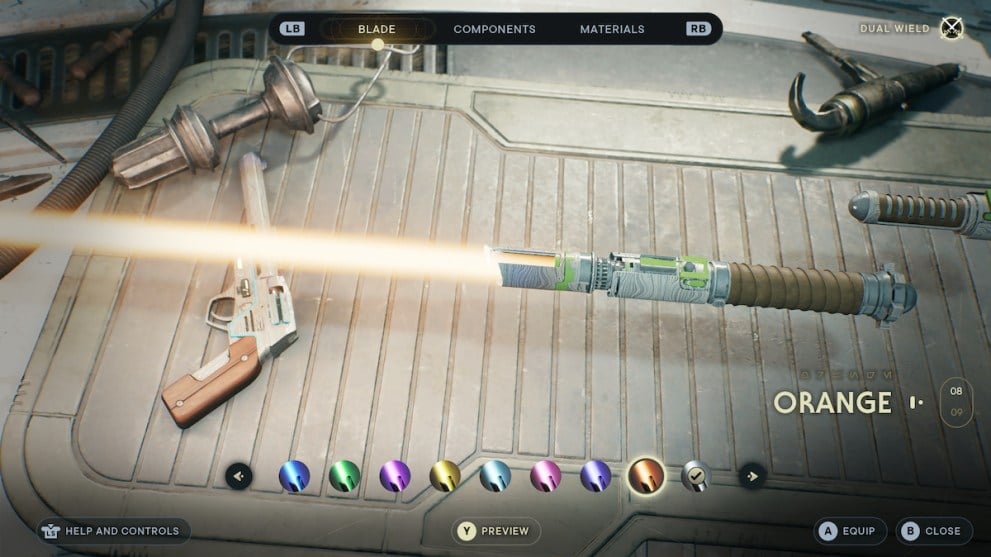
One of my favorite details in the game is one that you might miss if you don’t play with headphones. When you use a workbench to customize your lightsaber, cycling through the different blade colors will also change the tone of the blade’s sound ever so slightly.
This detail is key for the die-hard Star Wars fans who are concerned about the accuracy of their weapons. The different colors come from the Kyber crystals in the lightsaber burning with varying intensity, so the colors that are similar to each other in intensity share similar sounds. This detail was a nice touch that could have easily been skipped over.
The lightsaber’s hum depending on its color is a great way to give players another way to customize Cal, but I wish you could swap sounds between colors. The sounds of the indigo, magenta and white blades are my favorites, but it would be great if I could customize them to fit on the orange blade.
Cal Fought a Rancor Before Luke
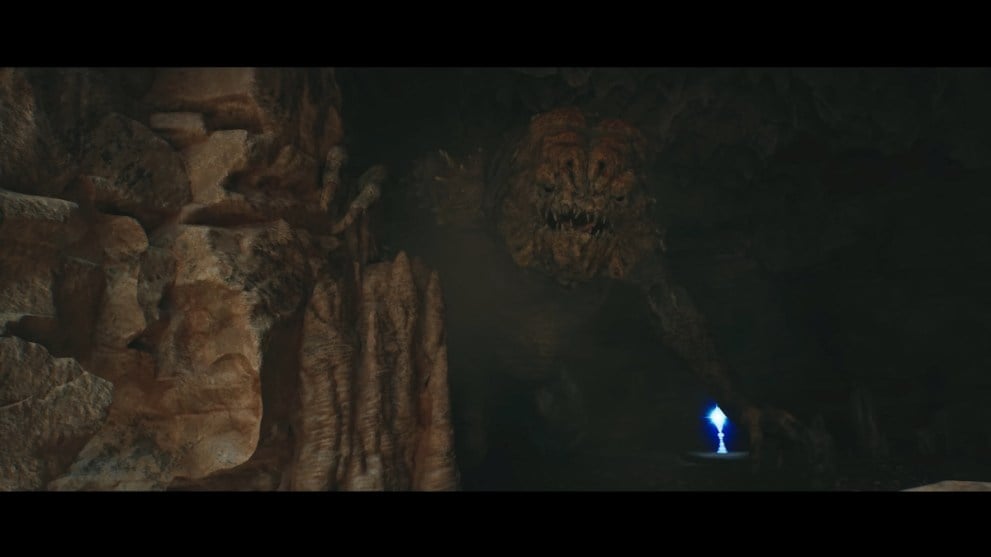
Early on in Jedi: Survivor, you’ll likely come across a prospector that tells you a rumor regarding one of the caves on Koboh. If you follow the prospector up on this quest and explore the cave, you’ll come across a fight with a Rancor, which in itself is a reference to Luke’s encounter with the Rancor in Return of the Jedi. However, the actual fight is not the only bit of fan service from this quest.
Duelling the Rancor proves to be one of the most difficult boss fights in the game, especially given that it is not a part of the main story. While it is advised to hold off on this battle until you’ve got a bit more health and a couple extra stims available, Cal isn’t left entirely out to dry. The cave that the Rancor resides in is littered with bones that you can use to assist Cal in his fight, similar to another young Jedi Knight.
You can grab the bones on the floor using the Force and then throw them into the Rancor’s mouth in order to stun it and open it up for a few hits. The attack can’t be used endlessly on the Rancor and it will become less effective, but it is certainly enough to get you the same advantage that Luke took. Not to mention that Jedi: Survivor takes place before the original trilogy, so Cal actually did it before Luke did.
Unique Animations
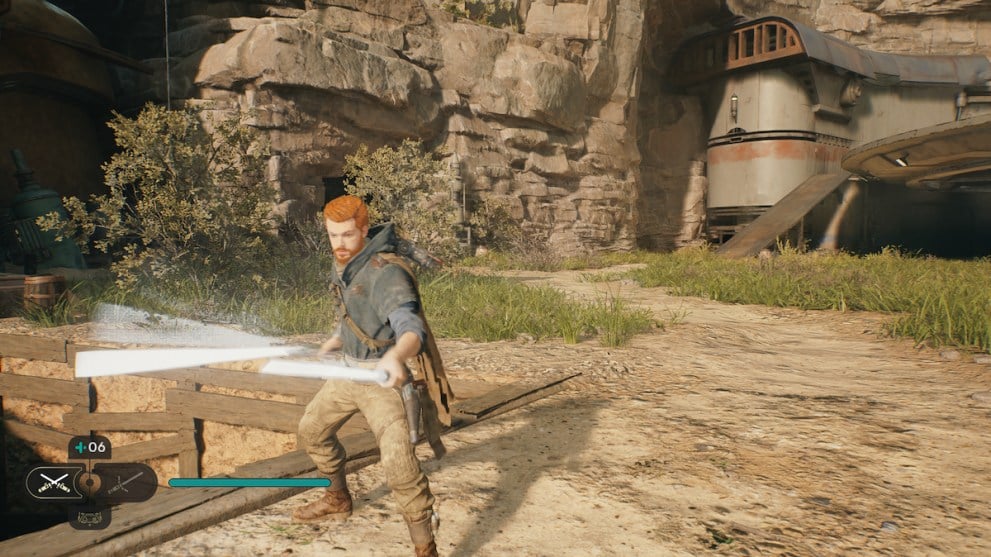
This detail actually serves as a continuation from one of my favorite details in Fallen Order. As you traverse across different planets and environments, the way Cal and BD-1 move is as dynamic as the worlds around them.
For example, when you squeeze through tight crevices, each gap triggers an animation that is unique to that spot. Many of these animations vary by only a duck of Cal’s head under a ledge, but others involve BD-1 having to dismount from Cal’s shoulder for them to fit. Those subtle nuances are what really ground the characters in the setting and add extra flavor to what could turn into repetitive traversal sections.
Along with the unique traversal animations, the new lightsaber stances all have a special set of moves to go with them. While there is plenty to love and break down about each individual stance and the choreography that went into them, I was particularly struck by the different animations used to swap between each one. Going from single to double-bladed looks different than going from blaster to crossguard, and the same goes for any combination of stances.
This subtle attention to detail shows how much care went into the nuance of the combat in Jedi: Survivor. Having each of these animations be slightly different from each other makes the transition between any two stances look smooth and unique, further serving to ground the gameplay.
The Battle Droids
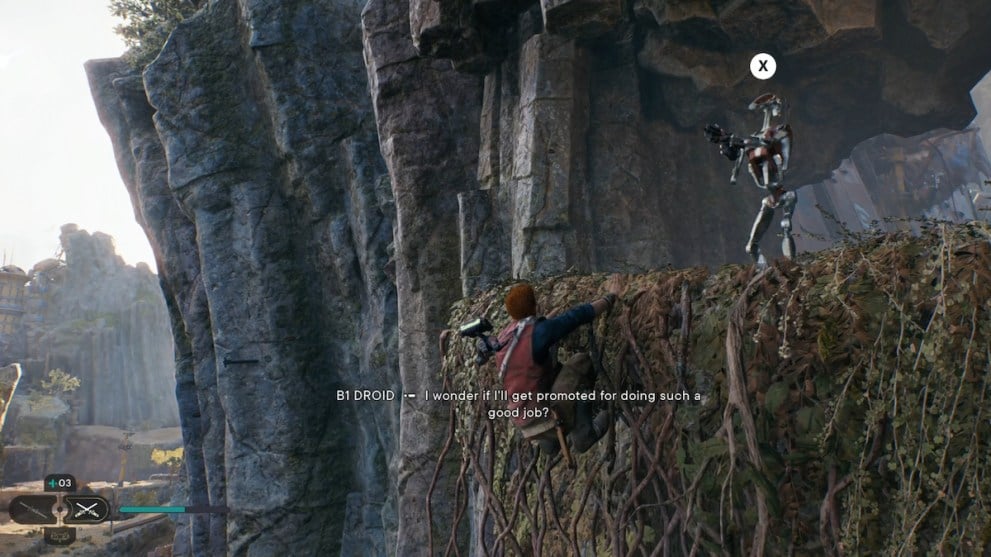
Since the first look of gameplay, one of my most anticipated aspects of the game has been the return of the Separatist Battle Droids, and I was not disappointed. While it is tons of fun to dispatch large groups of droids like you’re in the Clone Wars, the banter that they share amongst themselves is worth letting them stand a few seconds longer.
Jedi instincts probably dictate you start tearing through them as soon as you see them, but just listen before getting into combat and you’ll hear conversations amongst groups of droids, or even single droids just talking to themselves. The B1 Battle Droids still firmly believe that they’re free-thinkers that all hold authority over the rest of their comrades, and the B2 Droids are as confused and aggressive as ever. Some of them aren’t even interested in combat anymore, but have taken to the arts.
Having the Bedlam Raiders use primarily Battle Droids instead of human combatants also allows for more flexibility in what could be done and shown in-game. It would be a lot more uncomfortable completing a Force Echo where you have to defeat 150 enemies if the enemies were enlisted Stormtroopers whose arms and legs were being sliced off, so being able to use droids instead makes that combat a lot more palatable.
Adaptive Dialogue
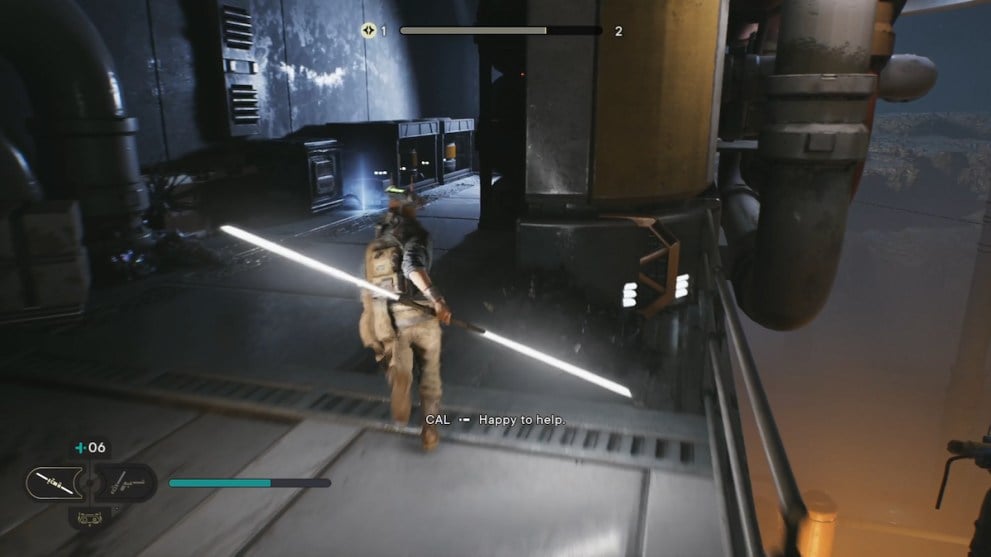
A clever detail that Respawn included in the game was to have characters say certain voice lines only after very specific situations or after optional dialogue. For example, if there is a group of droids having a conversation with each other, if you let them finish before fighting them, the characters might respond after the fight with a quip or comment. This really serves to ground the player into the world of the game because it really feels like it’s responding to your actions.
It’s also rewarding to see more of Cal’s personality outside of cutscenes and main story content. You can see and hear him interacting with the galaxy around him in a way that feels like it’s actively building his character instead of waiting for story beats to see what drives him and how he interacts with people. Having rideable mounts also allows for him to open up and express himself towards animals, which we’ve only seen glimpses of in Fallen Order.
In a similar token, hearing the enemies all react to how the fight is going is another really useful way to ground the game in its own universe. Hearing Stormtroopers go from cocky and arrogant to hesitant and fearful or hearing droids go from confident to chaotic as their numbers dwindle gives the player real-time input on how they’re doing in a fight, on top of sometimes just being worth a good laugh.
Star Wars Jedi: Survivor is filled with Easter eggs and references to all sorts of things throughout Star Wars canon, and no matter where you look there will be something to explore. Those are just five of the incredible details in Jedi: Survivor that you may have missed.
